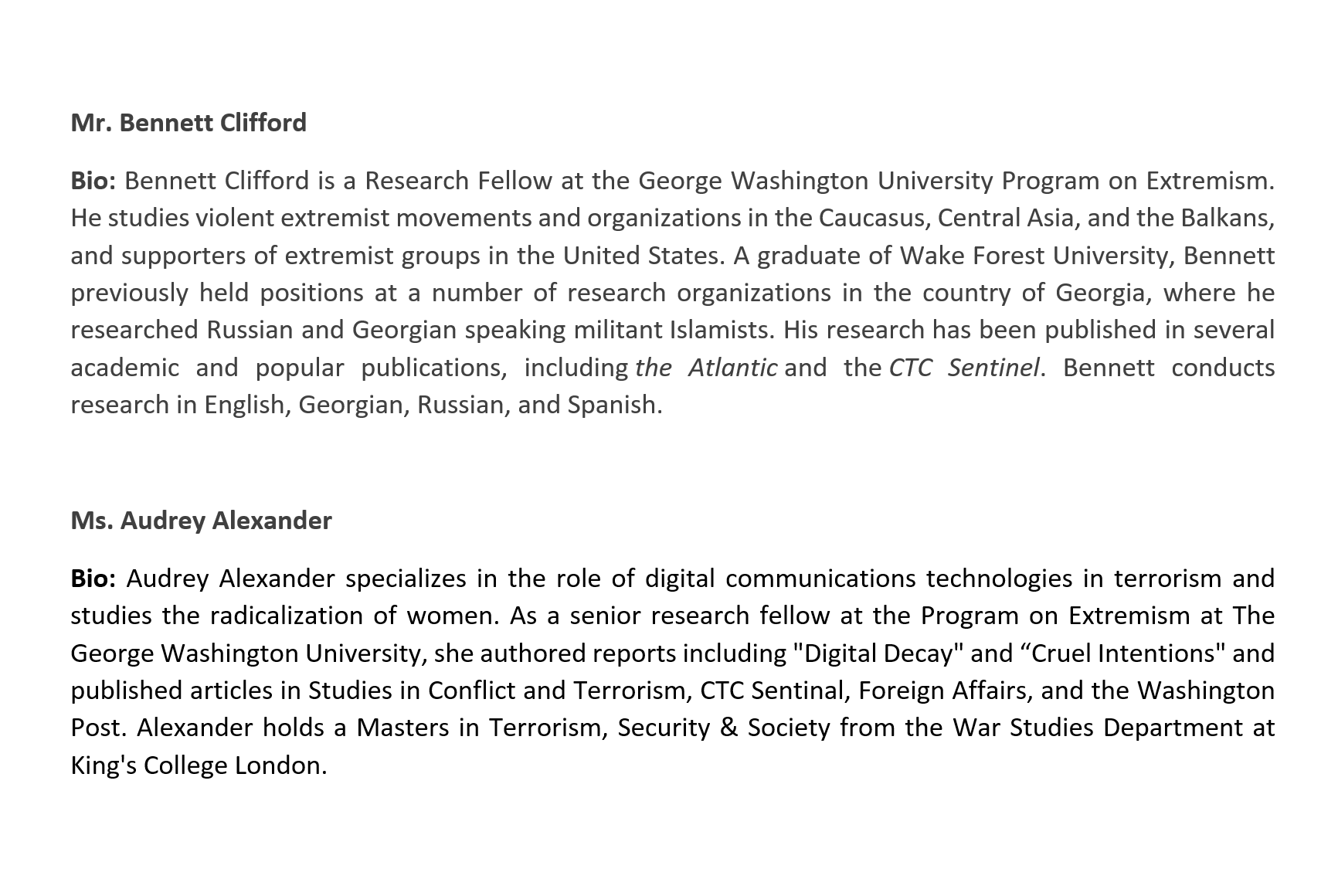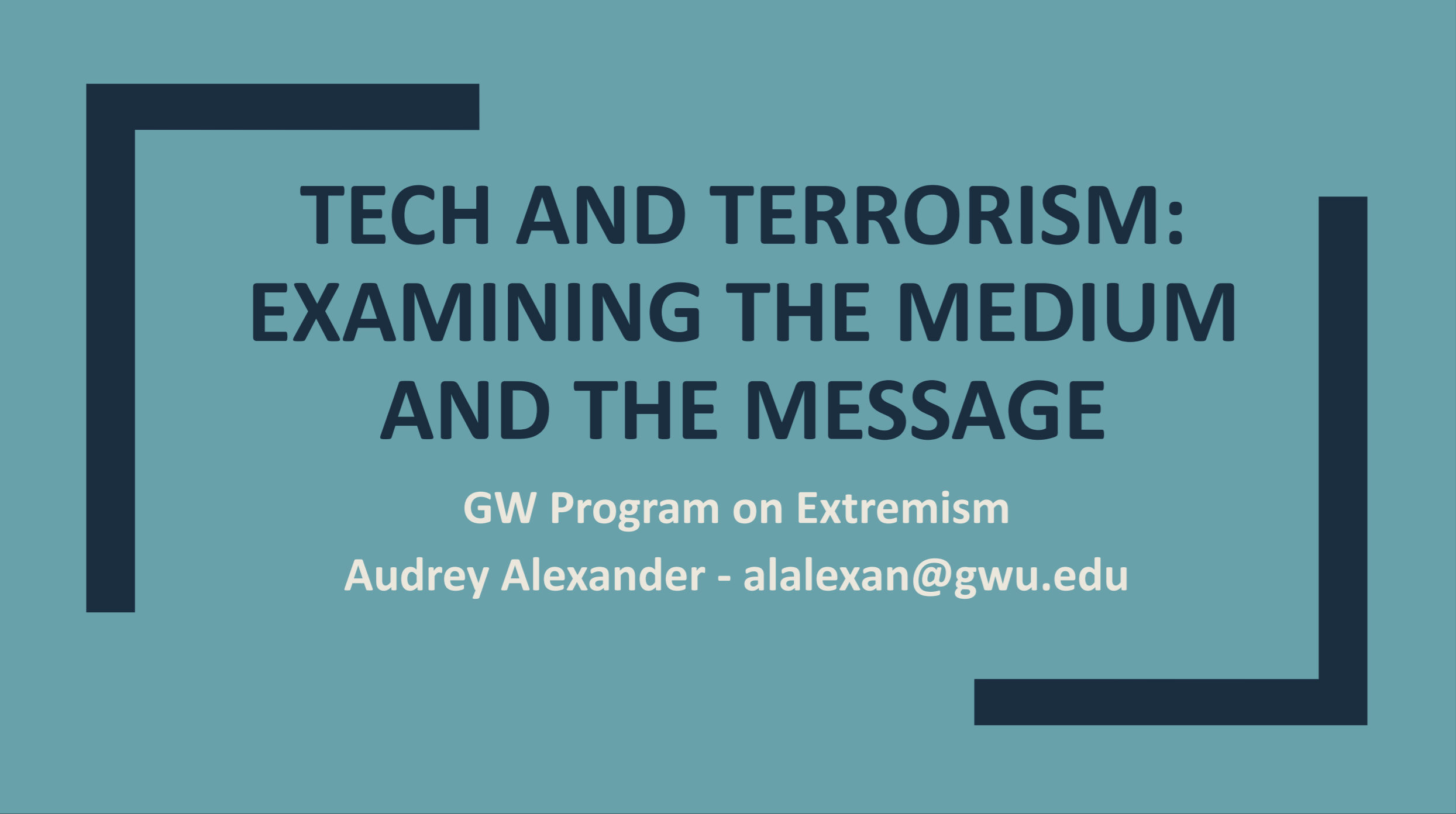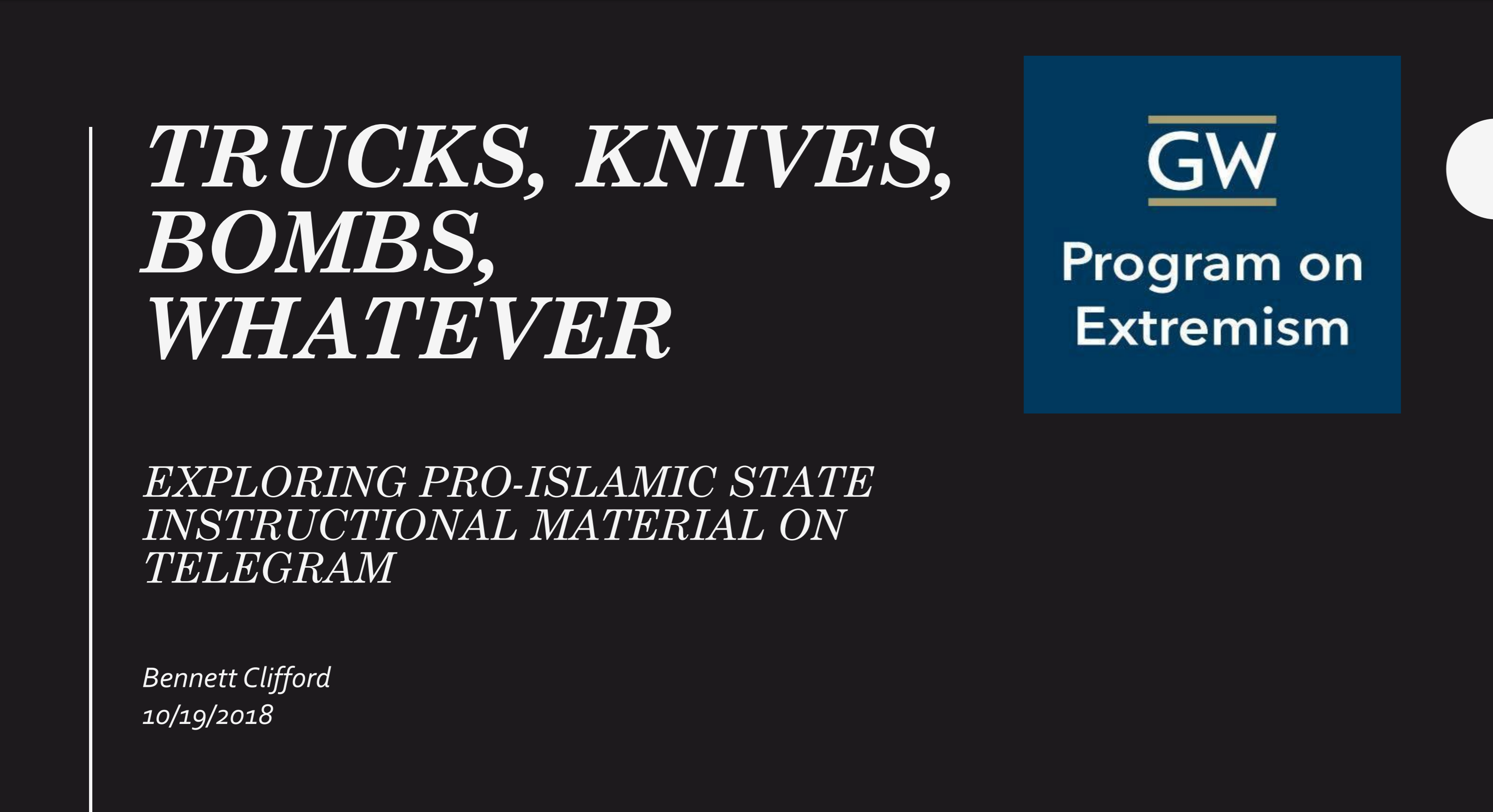“Tech and Terrorism: Examining the Medium and the Message” AND “Trucks, Knives, Bombs, Whatever: Exploring Pro-Islamic State Instructional Material on Telegram”
“Tech and Terrorism: Examining the Medium and the Message” AND “Trucks, Knives, Bombs, Whatever: Exploring Pro-Islamic State Instructional Material on Telegram”
Speakers: Alexander, A. (George Washington University); Clifford, B. (George Washington University)
Date: 19 October 2018
Speaker Session Preview
“Tech and Terrorism: Examining the Medium and the Message”
Ms. Alexander began by emphasizing the importance of recognizing that organizations have spread ideas by exploiting contemporary media for decades and that this is not a new or shocking approach. She then introduced her “Digital Decay” report, which addressed two primary questions: “How have Twitter’s counter-extremism policies affected English-language ISIS sympathizers on the platform?” and “How do ISIS sympathizers on Twitter engage with battles, attacks, and current events?” She also identified some key characteristics of ISIS’s utilization of various media based on her observations. In conclusion, Ms. Alexander explained why gray media and liminal content deserves attention as well, and emphasized the difficulty of developing a universal strategy to limit ISIS’s influence across various media.
“Trucks, Knives, Bombs, Whatever: Exploring Pro-Islamic State Instructional Material on Telegram”
Mr. Clifford began by outlining three key questions: “How do English-speaking online supporters of the Islamic State share instructional material on Telegram, and what types of material are frequently disseminated?”, “What can the dissemination of instructional material explain about the broader use of Telegram by ISIS supporters?”, and “What is the impact of online instructional material on terrorist learning and attack planning?” Next, he reviewed three major categories of instructional materials that ISIS disseminates: explosives construction materials, “low-tech” attack materials, and operational and cyber security materials, describing each in detail. In conclusion, Mr. Clifford outlined his three primary observations derived from his research.
Speaker Session Audio File
Download Ms. Alexander’s and Mr. Clifford’s biographies and slides



Comments